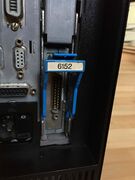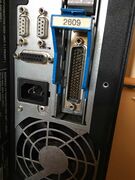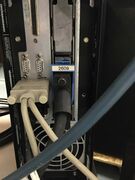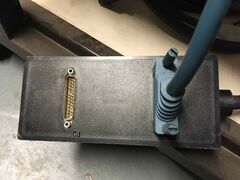Integrating LAN-less Machines into a local Token Ring
Sometimes, older, donated hardware comes without LAN I/O-Adapters. Sometimes these have serial communication I/O-Adapters, and Twinax, though. This article points out how to integrate such Hardware into a local Token Ring Network with the help of older Cisco Hardware.
This description is based on a proved to work setup. Surely, there are further ideas to explore, such as Bridging the Ring to Ethernet for SNA communications, or eliminate the Ring altogether by replacing it with just a Virtual-TokenRing interface on the Cisco Router.
Requirements
- AS/400, complete and functioning
- Local serial port with required breakouts, such as a #2609, or a #2652
- IBM V.24 Modem Cable[1]
- QAUTOCFG system variable switched to on
- Cisco 2612 or similar Router model with Token Ring Support, running IOS 12.3(26) or newer IOS with the Desktop Featureset (BINO3S3).[2]
- Cisco WIC-1T multi-functional serial port
- Cisco CAB-232 FC
- Other AS/400, complete and functioning, attached to a Token Ring
- QAUTOCFG system variable switched to on
Note! It is of utmost importance to make you aware that the AS/400 serial ports have sense pins, to sense which kind of cable is attached. If you plug in just an ordinary PC serial cable, you'll find the succinct message in the QSYSOPR message queue, that a cable could not be found. Therefore the requirement of an IBM V.24 Modem Cable, or a self made cable providing the necessary sense pin connectivity. For this reason, you'll need to plug the DB-25S socket connector of the Cisco Cable to the Modem cable, and not directly to the AS/400's port.
Weblinks
- DLSw+ Translation Between SDLC and Token Ring Media Example, Cisco.com
- RS-232 Timing Signals, Wikipedia
- Serial Cable CAB-232FC, Cisco.com
- AS/400 Service Functions, SY44-5902-03[3]



